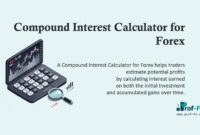Trading systems can be separated into two main components – market entry/exit signals and money management.
Most traders spend the majority of their time researching trading signals when starting to build a trading system. Unfortunately, many traders pay little attention to the money management component, which can be just as important.
Money management (also known as risk management), can be broken down into four topics – position size, risk of ruin, optimal leverage and individual trade risk.
This article provides formulas for all four components of a money management system. Using the statistics from a simple trading system, we will optimize position size using the Kelly Betting System.
From there, we will calculate the amount of capitalization necessary to avoid risk of ruin. Based on the same statistics, we will calculate the optimal leverage for the system. Finally, an experiment using a random long/short entry signal with a 2.5% trailing stop loss will be analyzed on the EUR/USD pair.
Position Size
Position size refers to the amount of money to place on each trade. Increasing position size increases the risk of each trade and the probability of reaching the point of ruin or the point where there is no longer enough capital in the account to continue trading.
In Perry Kaufman’s, New Trading Systems and Methods, there is a section dedicated to finding the optimal position size based on the Kelly Betting System.
Introduced by John L. Kelly, Jr. in the Bell System Technical Journal of 1956, the system was developed to help minimize long distance telephone signal noise issues for AT&T. The formulas developed by Kelly were eventually discovered by the trading community and are a part of many trading systems.
The goal of the following formulas is to find the optimal fraction of the portfolio to invest on any given trade, or optimal f. Optimal f is the fixed fraction position size that is small enough to avoid risk of ruin, yet large enough to make the most efficient use of capital. The first step is finding the required percentage gain necessary to recuperate a percentage loss.
For example, it takes a 25% gain to recuperate a 20% loss. A more complete picture is shown in Table 1.
| Loss | Required Gain |
| 5.00% | 5.26% |
| 10.00% | 11.11% |
| 20.00% | 25.00% |
| 30.00% | 42.86% |
| 40.00% | 66.67% |
| 50.00% | 100.00% |
| 60.00% | 150.00% |
| 70.00% | 233.33% |
| 80.00% | 400.00% |
| 90.00% | 900.00% |
Investment gains are clearly not equal to investment losses, which is why money management is vital to the success of any trading system.
The Kelly Betting System states the optimum fixed fraction position size is found by maximizing the growth function G(f).
Where: f = the optimal fixed fraction
P = the probability of a winning bet or trade
B = the ratio of the average wining return to the average losing return
ln = the natural log function
Solving for f, we find the optimal fixed fraction position size.
, for f = .01 to 1.0
Where: max = the function that returns the maximum value
= the product function
Ri = the series of individual trade returns
N = the number of trades
An alternate, simpler expression for optimal f is
Where: PLR = the ratio of average profit to average loss
P = the probability of a winning trade
To give an actual example, we tested a dual simple moving average crossover system on the EUR/USD pair with a short moving average length of 27 days and long moving average length of 36 days. The system has a 54.37% probability of a winning trade, $4,932.33 average winning trade and –($3,055.26) average losing trade, yielding a 1.61 average profit to average loss ratio.
Using the simplified expression for optimal f, , the system’s optimal fixed fraction position size per trade is 26.11% of the available capital.
We tested a position size of 100% of available capital versus the optimal f position size. Using the optimal f position size increased the profit factor from 1.92 to 2.06, decreased maximum drawdown from 14.67% to 4.10%, and decreased net profit from $132,613 to $26,129 with a starting capital of $100,000.
Capitalization
Before trading any system, it is important to calculate the risk of ruin. Acceptable levels for risk of ruin are based on an individual’s risk tolerance, though most traders would not trade a system if the risk was greater than 50%.
Similar to optimal f, system or discretionary trader statistics are used to find the risk of ruin. To calculate the probability, we use Kaufman’s modified version of Ralph Vince’s risk of ruin formula:
Where: = Probability of a winning trade
= Probability of a losing trade
= Absolute value of average winning trade to initial capital ratio (e.g. $4,932.33 / $100,000)
= Absolute value of average losing trade to initial capital ratio (e.g. $3,055.26 / $100,000)
Max Risk = Maximum part of investment that can be lost, in percent
Using the previous system as an example with maximum risk set at 50% of initial capital, the risk of ruin is:
With initial capital of $100,000 and no leverage, the probability of losing 25% of the account is 2.23%, 50% of the account is 0.05%, and 90% of the account is virtually 0%.
Varying the amount of initial capital and keeping the trade size constant reveals the logarithmic relationship between initial capital and risk of ruin. Simply, lowering the amount of initial capital increases the risk of ruin.






